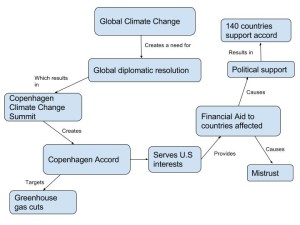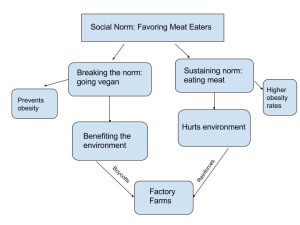Part 1: Relate the concepts and information from the module to a relevant global example. Describe the example and how it would affect ecosystems.
Part 2: Repeat part 1 with a different example.
Part 3: Describe ways in which you can help solve these problems.
1: Like the module touched on, the collapse of honey bees is an extremely pressing issue. Just last week #SaveTheBees was trending worldwide on Twitter. In many ways, humans have an anthropocentric view when it comes to bees: they’re a nuisance. Humans kill bees thinking they are protecting themselves from being stung. However, we are targeting the wrong bees. Honey bees are essentially harmless insects that pollinate crucial plants. Without bees, the produce section at our local grocery store or market would be barren. It would be devastating to major crops that are key to survival and enjoyment. Honey bees are disappearing as a result of human activity. As humans continue to spray powerful pesticides, bees will continue to die. The continuation of this disappearance would cause a drastic decline in pollination, causing the entire agricultural ecosystem to be affected. Daily items such as coffee, fruits, butter, and cotton would be a thing of the past. Humans need to be anthropocentric and ecocentric in order to reverse this problem. Anthropocentric because if the honey bees go extinct, our lives as we know it would change. Most of our necessary crops would not be pollinated. Ecocentric because we need to see the importance of bees in their ecosystems and the damaging role of pesticides on the environment.
2. A second threat to biodiversity that I have noticed in the world lately is also caused by humans. An overwhelming amount of trash in the ocean has lead to the death of thousands of sea turtles. Sea turtles often eat discarded plastic or get plastic tangled around their neck. If the plastic doesn’t choke them, it will prohibit them from swimming or weigh them down. Ocean plastic pollution has not only caused detrimental damage to sea turtles, but also to sea birds and other species of marine life. National geographic reports that there is a staggering 5.25 trillion pieces of trash floating in our oceans. It is easy to imagine the ocean as vibrant coral reefs with schools of fish swimming in harmony, but the immense amount of trash being dumped into the ocean is clouding that image. The ocean is known for being a bio-diverse environment, with millions of species living there. It is important that humans keep the ocean clean so these ecosystems can thrive as usual.
Video: These people found a sea turtle with a plastic fork stuck in its nose.
3: In order to help solve these two major problems, humans need to start caring more about the environment. Harmful pesticides are not only damaging to human health, but are detrimental to ecosystems. The threat of bees disappearing is reason enough for these pesticides to be stopped. Also, humans need to be more attuned to the benefit of honey bees. They are not out to sting you, simply to pollinate necessary crops. Honey bees are different from wasps, and understanding this difference could help the species. As for the sea turtles and marine life, its simple: don’t throw your trash into the ocean or leave it on the beach. Throw away trash in a trash can and don’t litter. While it isn’t proven that your trash won’t end up in the ocean anyway, it is still an improvement.



